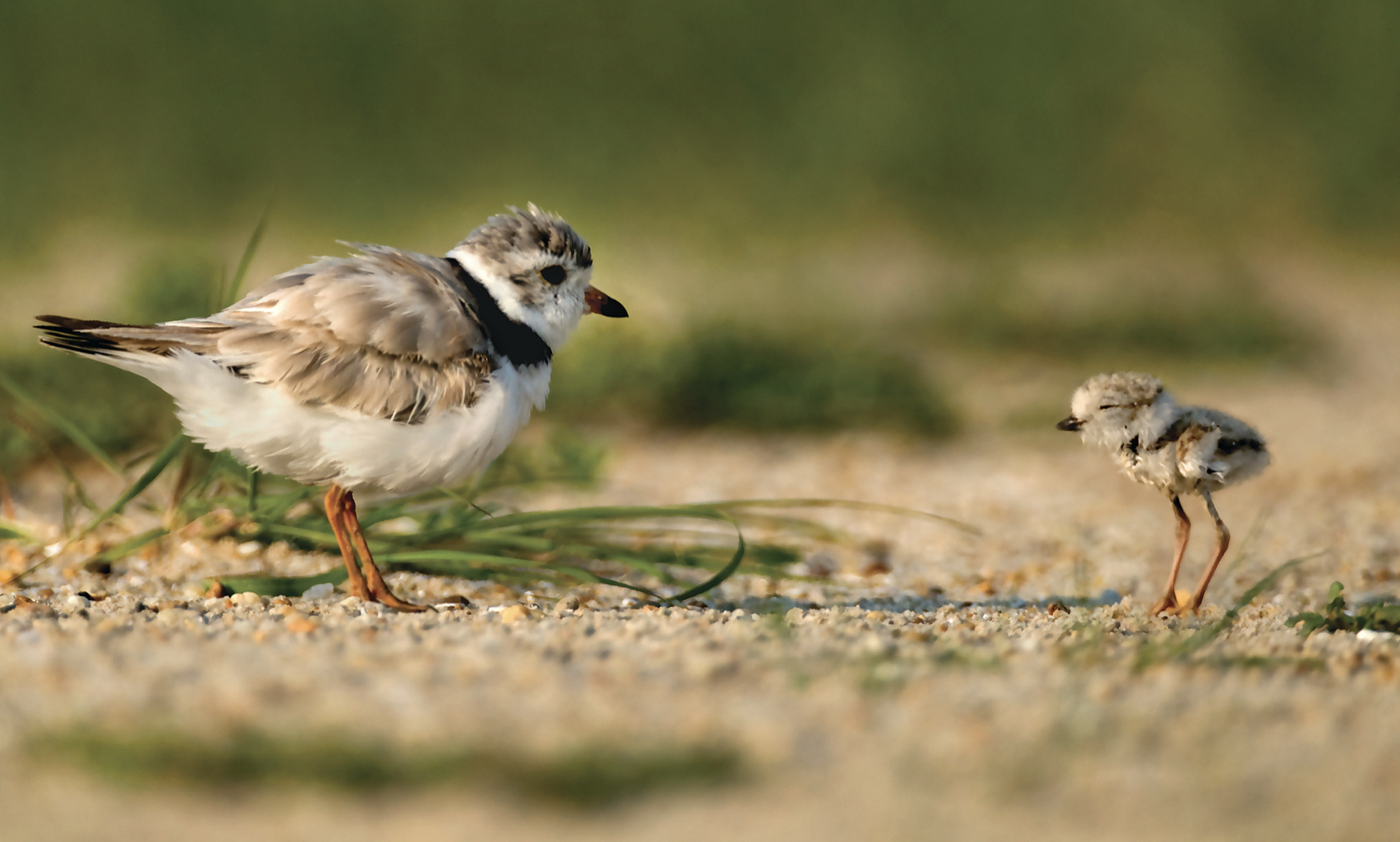
Piping Plovers on the Rebound.
By Lynn R. Parks | Photograph by Jay Fleming
From the Winter 2020 issue

In March, piping plovers will begin arriving at their nesting grounds along the Delaware Bay, having flown north from their wintering spots in the southeastern U.S. and eastern Mexico. And if the past few years are any guide, they will have a successful breeding season.
This past spring, 21 pairs of Charadrius melodus nested at the Point in Cape Henlopen State Park and on Fowler Beach in the Prime Hook National Wildlife Refuge, and raised 51 offspring. Those are the highest numbers the state has seen since 1986, when the plover was placed on the state’s endangered species list and also listed as threatened in the United States.
The plovers that nested in Delaware this year produced 2.4 fledglings per pair. That is “well above” 1.5 fledglings per pair, the long-term species recovery goal set by the U.S. Fish & Wildlife Service, says Samantha Robinson, manager of the state’s avian conservation program. Robinson says that much of the reason for the birds’ success is the new, wider Fowler Beach, which was restored in 2016 as part of a $38 million project to improve the resiliency of the refuge. The open sandy beach is “perfect for nesting plovers,” she says. Having found a good spot, “nesting pairs tend to return to such areas.”
Also helping the plovers is the fact that the state closes the beaches during nesting season. Workers also put wire cages around the nests to protect eggs and the young from hungry foxes, raccoons and skunks.
Robinson says that the state will continue to work toward a regional (Delaware, Maryland, Virginia and North Carolina) goal of maintaining 400 nesting pairs of piping plovers. Along the entire Atlantic coast, conservationists hope to eventually have 2,000 nesting pairs.
Those efforts, Robinson says, will benefit all creatures that rely on beach habitat, including least terns, American oystercatchers and migratory red knots, all threatened species. “Because [humans] are primarily the cause of their population decline, particularly through habitat loss to coastal development, we need to do all we can to help them recover,” she says.



